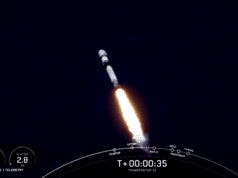India, 1 January 2007 – The Indian space programme continued to make forays in the development of new technologies during the year 2006 with the successful ground testing of indigenous cryogenic stage for GSLV, good progress made in the GSLV-Mk III project and demonstration of Supersonic Combustion Ramjet (SCRAMJET).
As an important strategy for establishing an indigenous and independent satellite navigation system, the government approved in May 2006, the establishment of Indian Regional Navigational Satellite System (IRNSS).
Space applications continued to expand reaching the benefits of space technology to a wider cross section of the society. The EDUSAT network has expanded to 33 nodes connecting about 10.000 classrooms. ISRO’s satellite based telemedicine network has expanded to connect 182 hospitals – 148 remote and rural hospitals including those in J & K, NE region and Andaman and Nicobar Islands and 34 super specialty hospitals in major cities.
So far, 130 Village Resource Centres (VRCs) have been established to facilitate access to spatial information on important aspects like land use/land cover, soil and ground water prospects and enable the farmers in taking important decisions based on their query.
The commercial activities picked up momentum with the winning of two contracts for building communication satellites for European customers jointly with EADS, France. Space exploration mission got further fillip with Chandrayaan-1 mission making substantial progress and ISRO agreeing to carry two US-NASA instruments on board the spacecraft in addition to its own five primary instruments and three instruments of European Space Agency and one from Bulgaria.
The year 2006 also saw a setback when GSLV-F02 mission did not succeed. However, the space programme continued to look towards even more challenging missions and the studies conducted by ISRO for a manned space mission were discussed by scientists in November 2006.




